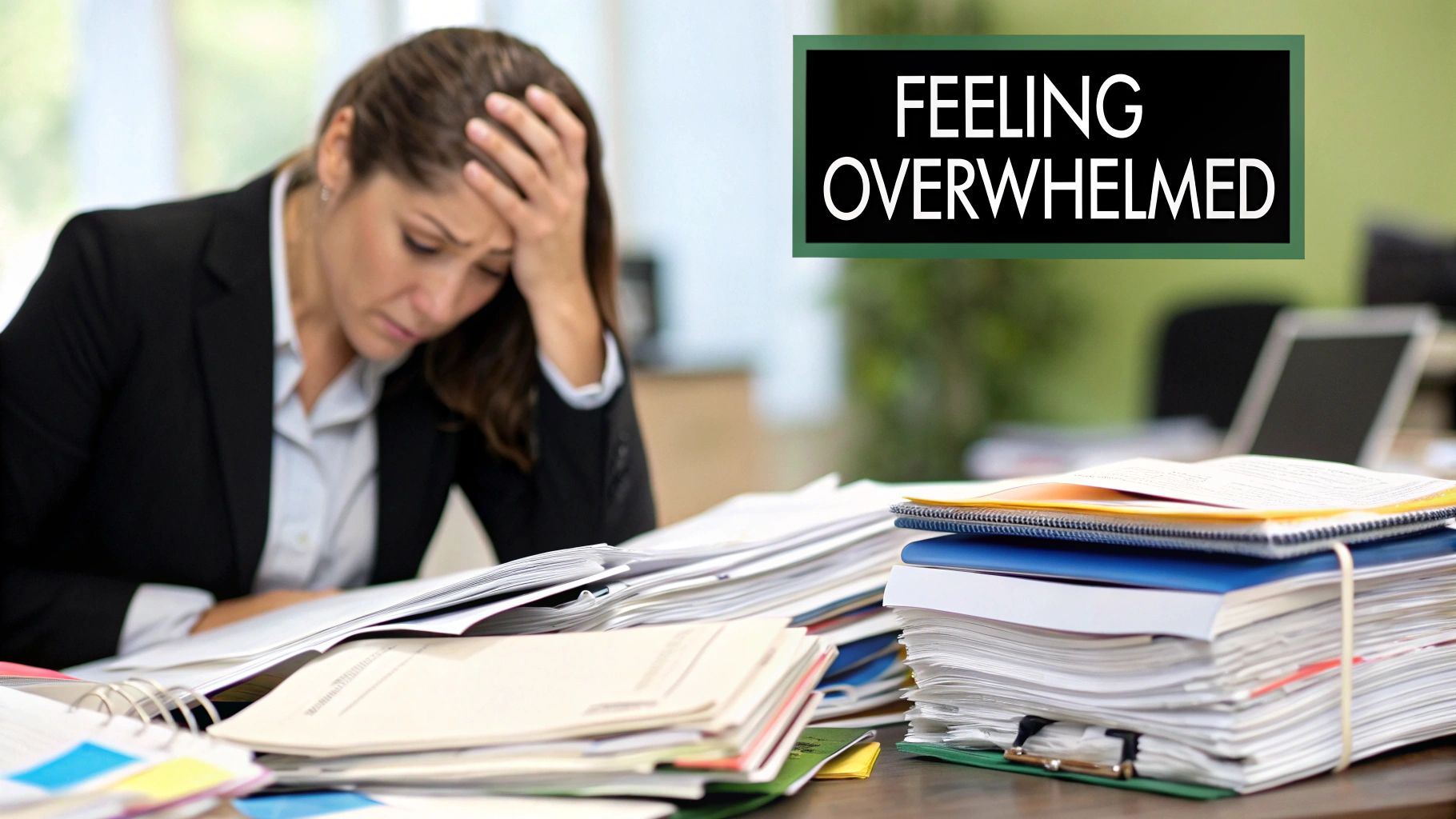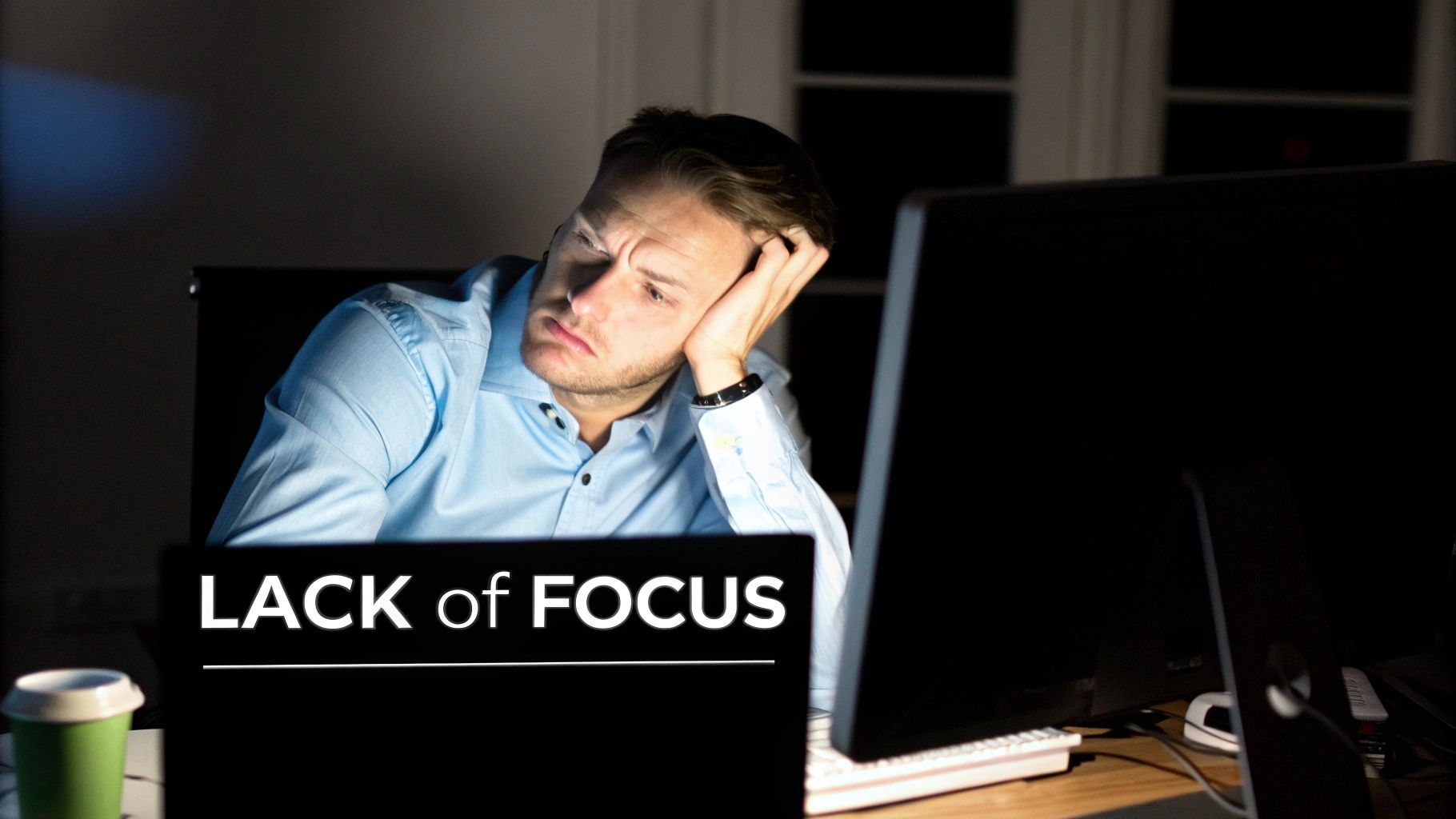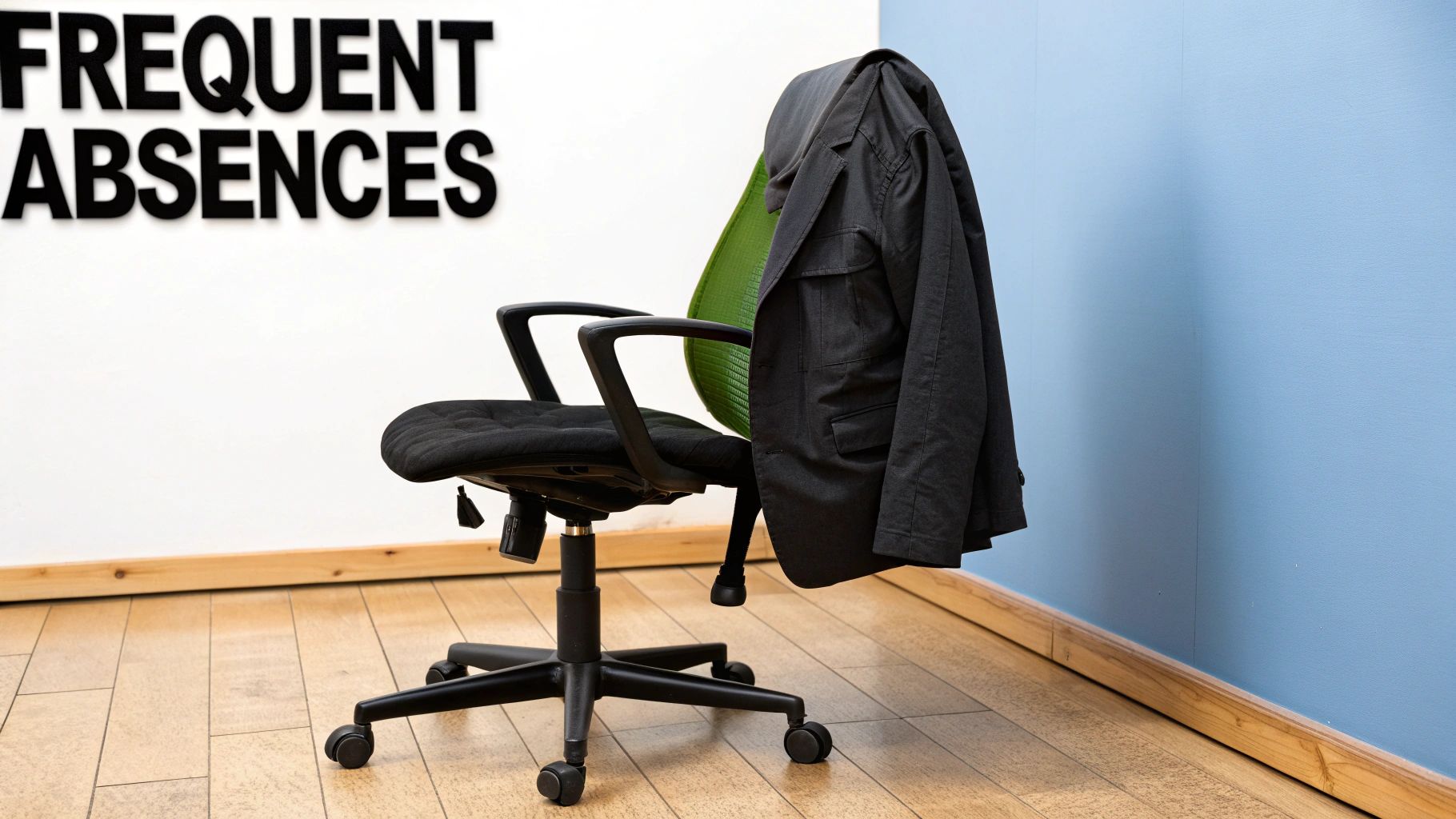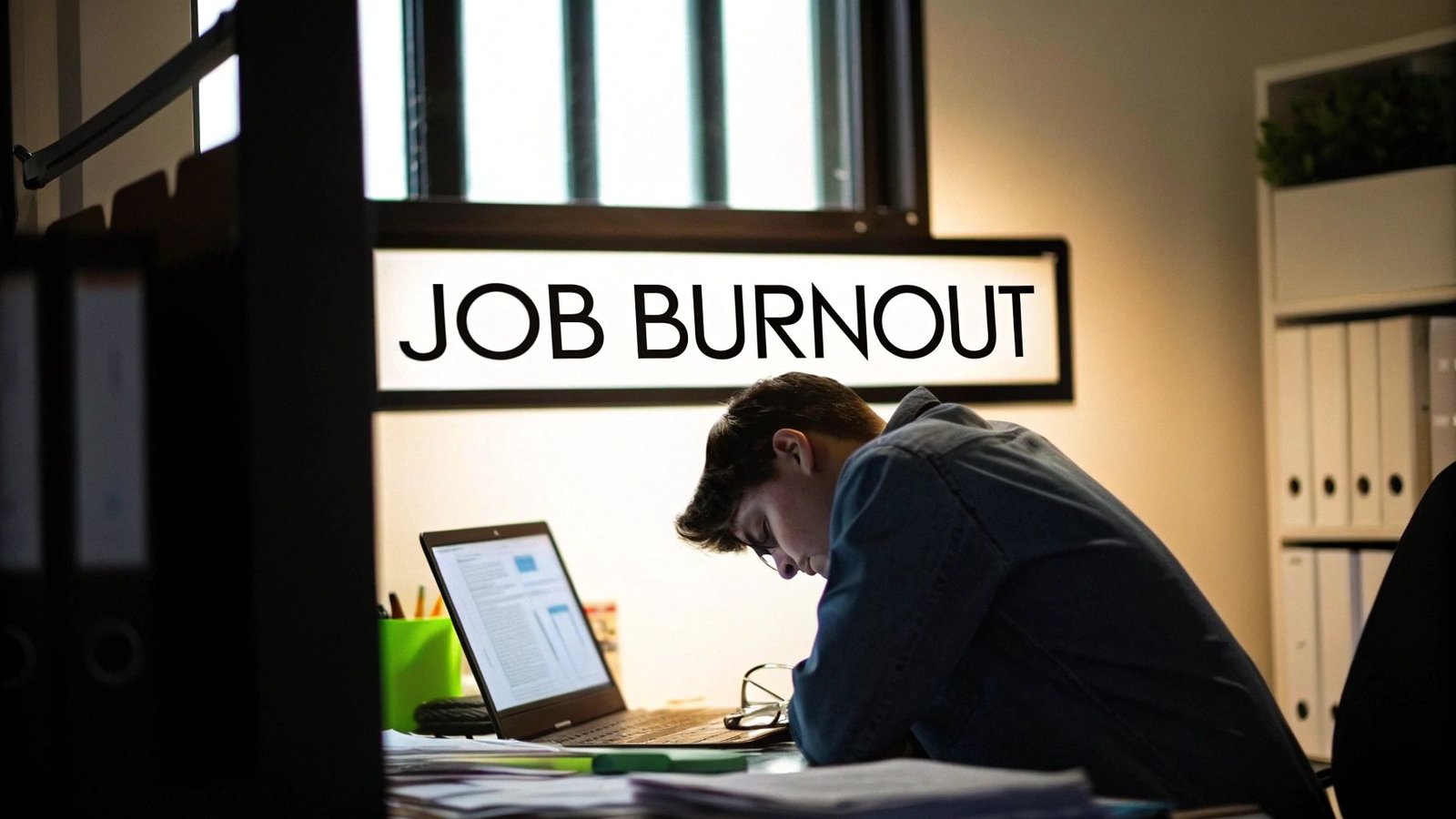The Modern Crisis: Understanding Workplace Burnout

Workplace burnout has become an increasingly common challenge affecting professionals across industries. Unlike typical end-of-day fatigue, job burnout manifests as ongoing emotional, physical, and mental exhaustion directly connected to work. When burnout takes hold, people find themselves depleted of energy and motivation needed to perform their regular duties. A recent study by SHRM found that 44% of U.S. employees report feeling burned out, with many describing themselves as "emotionally drained" and "used up" even after leaving work. These concerning numbers highlight why understanding burnout has become essential for both employees and organizations.
Differentiating Burnout from Stress: A Critical Distinction
While most jobs involve some level of stress, burnout operates differently. Job stress typically brings heightened emotional and physical responses to specific pressures, but these feelings usually fade once the pressure lifts. Burnout, however, persists as a state of ongoing depletion that doesn't improve just by taking time off or changing environments. This sustained exhaustion affects both personal wellbeing and work performance in significant ways. According to a Deloitte report, 77% of professionals have experienced burnout in their current role, with many pointing to insufficient support from leadership as a major factor.
The Human Cost of Job Burnout: More Than Just Tiredness
Burnout's impact extends far beyond simple tiredness, touching multiple aspects of a person's life. Physical symptoms often include frequent headaches, digestive issues, and decreased immunity. On the emotional side, people tend to become cynical and irritable, losing interest in activities they previously enjoyed. These personal struggles then affect work through reduced productivity, increased sick days, and more frequent errors. The ripple effects reach team dynamics and organizational success – some estimates suggest burnout-related issues cost businesses $500 billion annually in lost productivity.
Early Recognition is Key: Identifying the Subtle Signs
One challenge in addressing burnout is its gradual onset – symptoms often develop slowly and can be easily dismissed or attributed to other factors. Being alert to early warning signs helps prevent burnout from becoming severe. Watch for persistent dread about going to work, difficulty focusing, or growing negativity toward job responsibilities and coworkers. These early indicators, when spotted and addressed promptly, can prevent more serious issues down the line. You might be interested in: How to master…. By recognizing these subtle signs early, both individuals and organizations can take steps to maintain wellbeing and work quality.
Recognizing the Warning Signals: Physical and Emotional Signs

Job burnout goes far beyond typical work stress. It's a state of ongoing exhaustion that shows up in clear physical and emotional ways. While feeling stressed about an upcoming deadline is normal, waking up every morning dreading work is a serious warning sign. In fact, 51% of workers report experiencing this kind of persistent dread – a clear indicator that something deeper than regular work anxiety is at play.
Decoding the Emotional Toll of Job Burnout
The emotional impact of burnout often starts subtly. You might notice your enthusiasm for work gradually fading, replaced by negative feelings toward your job and coworkers. Small annoyances that you used to brush off now trigger intense frustration. This heightened irritability can damage your relationships both at work and at home. Many people also find it harder to concentrate – tasks that once came easily now require intense focus. Decision-making becomes more difficult, and forgetfulness increases. These changes directly affect your work quality and overall effectiveness on the job.
The Physical Manifestations of Job Burnout
Your body sends clear signals when experiencing burnout. The exhaustion runs deeper than normal tiredness – it's a bone-deep fatigue that doesn't improve with rest. Sleep patterns often suffer, with some people developing insomnia while others sleep excessively as their bodies try to cope. Physical problems like headaches, stomach issues, and tense muscles become more frequent. The ongoing stress can even weaken your immune system, making you more likely to catch colds and other illnesses. These physical symptoms often appear alongside emotional distress, showing how deeply burnout affects overall health.
Recognizing Your Personal Burnout Signals
Everyone experiences burnout differently. Understanding your specific warning signs helps you spot problems early. Pay attention to changes in both your emotional state and physical health.
- Create a Burnout Inventory: Check in with yourself regularly about your emotional state. Notice if you're feeling constantly drained or more cynical than usual. Keep track of significant mood shifts, especially regarding work.
- Track Physical Symptoms: Monitor your body's signals. Are you getting more headaches lately? Having trouble sleeping? Write down any physical changes you notice.
- Reflect on Your Work Habits: Look for changes in how you work. Maybe you're missing more deadlines, having trouble focusing, or calling in sick more often. These shifts in behavior often point to deeper issues.
Catching these warning signs early lets you address burnout before it seriously impacts your health. By understanding how burnout specifically affects you, you can take steps to protect your well-being and maintain a healthy relationship with work. Remember, identifying these signals is the first step toward making positive changes in your work life.
High-Risk Industries: Where Burnout Thrives

While burnout can affect anyone, some industries face much higher rates than others. By examining why certain sectors struggle more with this issue, we can develop better ways to support workers and create healthier work environments. Let's look at three industries where burnout hits particularly hard.
The Hospitality Industry: Serving Up Burnout
Walk into any restaurant or hotel and you'll find an industry grappling with an 80% burnout rate. The endless stream of customer interactions, unpredictable schedules, and often modest pay take their toll on workers' wellbeing. Picture a server racing between tables during the dinner rush while maintaining a smile – even as difficult customers test their patience. These daily stresses build up over time, leaving many hospitality workers physically and emotionally drained.
Healthcare: A Heavy Burden to Bear
The numbers are stark – 77% of healthcare workers report experiencing burnout. Between long shifts caring for sick patients, mounting paperwork, and chronic understaffing, these professionals face intense pressure daily. A nurse might spend 12 hours on their feet, making critical decisions while providing emotional support to patients and families. This combination of physical demands and emotional labor often leads to compassion fatigue – a form of burnout common in caring professions.
Education: Molding Minds, Burning Out
Teachers shape the next generation, but at a heavy personal cost – 76% report burnout symptoms. Beyond lesson planning and classroom management, they juggle standardized testing requirements, large class sizes, and limited resources. A middle school teacher might spend evenings grading papers and weekends preparing materials, all while trying to meet each student's unique needs. This endless cycle of giving leaves many educators feeling depleted.
Why Traditional Solutions Fall Short
Simply offering more vacation days or generic wellness programs often misses the mark in these high-stress fields. These band-aid fixes don't address core issues like understaffing, unrealistic workloads, or lack of control over one's work. Real solutions must tackle the specific challenges each industry faces.
Innovative Approaches for High-Risk Sectors
Each sector needs targeted strategies that address its unique pressures:
- Hospitality: Better scheduling practices, fair wages and benefits, and support resources for handling difficult customer interactions
- Healthcare: Less paperwork, adequate staffing levels, and peer support networks for processing emotional challenges
- Education: More classroom autonomy, mentoring for new teachers, and reduced testing pressure to focus on student growth
Understanding burnout patterns in these industries helps us create more effective solutions. When we address the root causes of stress in each sector, we protect workers' wellbeing while improving service quality. Supporting these essential workers isn't just good practice – it's vital for building sustainable workplaces that benefit everyone.
The Hidden Impact: Measuring Burnout's True Cost

Job burnout takes a serious toll that goes far beyond individual employees. Its effects ripple through entire organizations, touching everything from daily operations to long-term success. To properly address burnout, we need to understand its full scope and how it impacts teams, innovation, client relationships, and financial results.
The Financial Fallout: Lost Productivity and Turnover
The numbers tell a sobering story. Workplace stress and mental health issues, with burnout being a major contributor, cost U.S. businesses around $500 billion each year. This shows up in concrete ways – employees missing work more often, making mistakes due to exhaustion, and requiring more healthcare services. For instance, a team member struggling with burnout might miss key deadlines or overlook important details, creating a domino effect of delays and budget overruns.
High turnover makes things even worse. Research shows that burned-out staff are nearly three times more likely to start job hunting. Every time someone leaves, companies face hefty costs for hiring and training replacements. But the biggest hit often comes from losing experienced employees who take years of knowledge and skills with them when they go.
Eroding Innovation and Customer Satisfaction
When employees are running on empty, their ability to innovate and serve customers suffers. People who are mentally and physically drained struggle to generate fresh ideas or find creative solutions to problems. It's like trying to sprint on a sprained ankle – you might push through for a while, but you won't perform at your best.
Customer service takes a hit too. Burned-out employees often have shorter fuses and less patience for addressing client needs. These negative interactions can damage relationships that took years to build, leading to lost business and damaged reputations. One poor customer experience can undo months of goodwill.
Disrupting Team Dynamics and Collaboration
Burnout creates cracks in team foundations. When even one person is struggling, it affects the whole group. That team member might stop participating in meetings, take longer to respond to coworkers, or bring down the energy of the entire team. These communication breakdowns and tensions make it harder to complete projects and maintain positive working relationships.
Measuring the Intangible Costs
While some burnout costs show up clearly on balance sheets, others are harder to quantify but just as damaging:
- Decreased Employee Engagement: People stop investing their full effort and creativity into their work
- Damaged Company Culture: Widespread burnout creates an environment of cynicism and low morale
- Reputational Damage: Word gets around about high burnout rates, making it harder to attract good candidates
These hidden costs create lasting damage that can take years to repair. By recognizing and actively working to prevent burnout, organizations can build healthier workplaces that support both their people and their goals.
Leadership's Critical Role in Burnout Prevention
Managers and leaders have a direct impact on their team's well-being and stress levels. Research from Deloitte shows that 77% of employees cite poor leadership support as a key factor in their burnout. This highlights how crucial it is for leaders to actively prevent burnout rather than unintentionally contribute to it through their management style and decisions.
Fostering a Supportive Culture: More Than Just Words
Creating a truly supportive workplace requires deeper changes beyond surface-level wellness programs. Leaders need to establish an environment where team members feel comfortable discussing workload challenges and stress openly. This means actively listening when employees raise concerns, validating their experiences, and responding with real solutions. For example, a leader might facilitate team discussions about project timelines, help prioritize competing deadlines, or work with the group to redistribute tasks when someone is overwhelmed. These concrete actions build trust and show employees that their well-being matters.
Rethinking Recognition: Beyond the "Employee of the Month"
Standard recognition programs like monthly awards or annual bonuses don't address the core emotional needs that prevent burnout. While financial rewards are important, employees also need to feel truly valued for their specific contributions and efforts. Effective recognition might include highlighting someone's creative problem-solving in a team meeting, offering growth opportunities aligned with their interests, or simply having regular check-ins to express genuine appreciation. This personal touch helps employees stay connected to the meaning in their work. Learn more in our article about How to master…
Creating Sustainable Work Practices: Time Off Isn't Enough
While vacation time matters, preventing burnout requires building sustainable daily work habits. Leaders should set realistic workload expectations, encourage regular breaks, and support work-life boundaries. Think of maintaining employee energy like training for a marathon – it's about finding a sustainable pace for the long run, not sprinting until exhaustion. This means implementing flexible schedules where possible, making space for rest during the workday, and creating team norms that value recovery time as much as productivity.
Leading by Example: Walking the Talk
The most powerful way leaders can fight burnout is by modeling healthy work habits themselves. When managers take breaks, set boundaries around email hours, and openly prioritize their own well-being, it shows the team that self-care is truly valued. This creates psychological safety for employees to do the same. Leaders should also be transparent about addressing burnout within the management team, showing vulnerability while demonstrating their commitment to building a healthier workplace culture. These actions create lasting positive change throughout the organization.
Actionable Solutions: From Recognition to Recovery
Recognizing burnout symptoms is important, but real change comes from taking concrete steps to address its root causes. This requires both personal changes and support from your organization to build a healthier relationship with work.
Practical Techniques for Individuals: Reclaiming Your Well-being
If you're experiencing burnout, you can take several key steps to regain control over your work life:
- Workload Management: Start by breaking big projects into smaller chunks and learn when to delegate. Keep a running list of priorities and tackle the most important items first. This puts you back in the driver's seat when work feels overwhelming.
- Boundary Setting: Draw clear lines between work time and personal time. Set specific hours for checking email, stick to them, and make time for activities you enjoy outside of work. When you protect your personal time, you're better equipped to handle work challenges.
- Stress Reduction Techniques: Build simple stress-relief practices into your day. This could be a 10-minute walk at lunch, deep breathing exercises between meetings, or quick stretching breaks. Small consistent actions add up to make a real difference in managing stress levels.
Organizational Strategies: Creating a Sustainable Workplace
Companies play a crucial role in preventing burnout through workplace policies and culture:
- Mental Health Initiatives: Provide easy access to counseling services, employee assistance programs, and workshops on managing work pressure. When employees know support is available, they're more likely to seek help early.
- Workflow Redesigns: Look for bottlenecks and inefficiencies in current processes. Simple changes like reducing unnecessary meetings or automating repetitive tasks can significantly reduce employee stress while improving productivity.
- Culture Shifts: Build an environment where people feel safe discussing workload concerns with managers. Back this up with concrete policies like flexible schedules and adequate time off. When employees see their well-being is valued, it strengthens trust and engagement.
Measuring Progress and Refining Strategies: A Continuous Process
Making these changes requires ongoing attention and adjustment based on what's working:
| Measurement Criteria | Data Collection Methods |
|---|---|
| Employee Burnout Levels | Surveys, focus groups, individual check-ins |
| Turnover Rates | HR records, exit interviews |
| Productivity Metrics | Project completion rates, performance evaluations |
| Employee Engagement | Surveys, pulse surveys, participation in wellness programs |
| Absenteeism Rates | Attendance records |
Regular monitoring of these indicators shows whether burnout prevention efforts are making a difference. This data helps organizations fine-tune their approach and ensure resources are directed where they'll have the most impact. Read also: How to master… Success comes from both individual commitment to self-care and organizational support for employee well-being.
Ready to take control of your career and move past burnout? Visit CareerTruth to learn practical strategies for building a more balanced and fulfilling work life.


